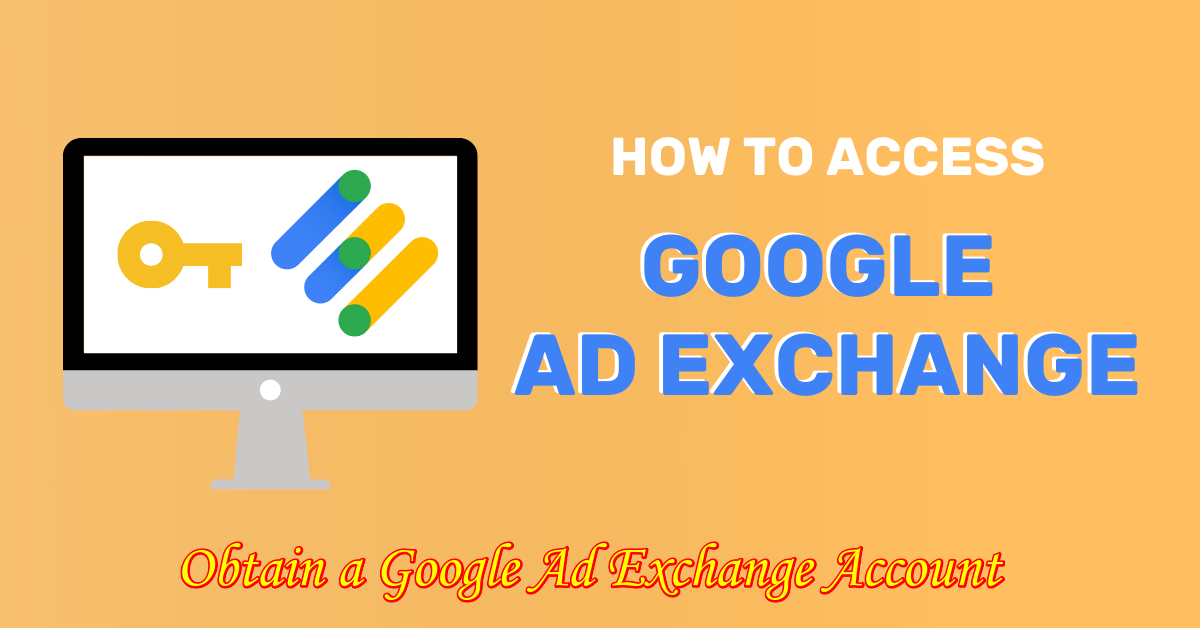Best Adx Approval Se...
Best Adx Approval Services To Buy Online: Step-by-Step Guide

Best Adx Approval Services To Buy Online: Step-by-Step Guide
Key Highlights
Google AdX offers publishers a way to elevate their monetization strategy, potentially unlocking higher ad revenue streams compared to AdSense.
Before applying, it’s crucial to ensure your website meets Google’s stringent eligibility criteria, focusing on high-quality content, brand safety, and a considerable volume of traffic.
Google Ad Manager plays an integral role in the AdX journey, acting as the command center for publishers to manage their inventory, set pricing, and track performance.

Implementing advanced techniques like header bidding can further enhance your AdX earnings by introducing greater competition among ad buyers.
Continuous optimization, from ad placements to leveraging data-driven insights, is key to making the most of your Google AdX experience.
Introduction
This simple guide is for publishers who want to learn about getting a Google AdX account. It will help you understand how to use it well. Google AdX can give you higher revenue and better control of your ad inventory. This makes it very valuable for online advertising.
We will show you the key requirements. You will also find an easy step-by-step guide to apply for an adx account. Lastly, we will share some tips to improve your monetization strategy with Google AdX.
Understanding Google Ad Exchange (AdX)
Google Ad Exchange, or AdX, is a top ad platform by Google. It helps publishers earn more money from their ads using real-time bidding. AdX gives access to high-quality ad inventory and connects to demand sources for better earnings. When combined with Google Ad Manager, AdX provides better targeting options. This helps to increase user engagement and improve ad quality. Knowing how Google Ad Exchange works is key to earning money fully and taking your revenue potential to the next level.
The Role of Google AdX in Digital Advertising
Google AdX is a leader in digital advertising. It connects publishers to many different demand sources. Publishers on AdX do not just depend on advertisers from Google’s network. They can get bids from many ad networks, agencies, and demand-side platforms (DSPs). This competition gives publishers a boost. It often leads to higher bids and better chances for ad revenue.
Additionally, Google AdX showcases premium ad inventory. Advertisers want to reach specific audiences with high-quality, engaging ads. They are usually ready to pay more for ad space on AdX. This can lead to higher earnings for publishers who have strong user engagement and valuable traffic.
Benefits of Google AdX for Publishers
One big benefit of Google AdX is that it can boost your ad revenue a lot. By reaching more advertisers and using real-time bidding, publishers can earn more for their ad impressions. Many publishers moving from AdSense to AdX notice a big jump in their earnings.
AdX also gives publishers control over their premium ad inventory. You can set rules for what kinds of ads show up on your site. This way, the ads are safer for your brand and more relevant to your audience. This customization helps create a better user experience. Visitors are less likely to see annoying or unrelated ads.
When publishers switch to AdX, they often see better ad quality and more relevant ads. This typically leads to better user engagement, which means more page views, longer time spent on your site, and fewer people leaving quickly. These signs show that your ads fit well with the overall user experience.
Preparing for Google AdX Approval
Getting approved for Google AdX is tough. Google sets high standards to keep the platform known for its quality ad inventory. Before you apply, it’s important to check your website against Google’s eligibility criteria. Make sure to fix any issues you find.
You need to have original and engaging content without any policy violations. Also, pay attention to where your ads are placed. Google wants a website that gives a good experience for visitors. They value both users and advertisers.
Essential Requirements for Eligibility
To get approval for Google AdX, you need to know the eligibility criteria of the platform. First, Google wants publishers who have a lot of traffic. They don’t share the exact numbers, but a common goal is to get millions of page views each month. Having this large audience is important because it helps advertisers reach their target audience when they run campaigns on AdX.
In addition to traffic, content quality is very important. Your website needs to have original and engaging content that follows Google’s strict content rules. You should stay away from content in prohibited areas like adult themes, hate speech, or anything illegal. Google wants to keep a safe environment for advertisers, so be mindful of this.
Gathering Necessary Documentation and Resources
As you start your Google AdX journey, gathering the right documents and resources is like picking out the right tools for your job. First, you will need a working Google Ad Manager account. This account is your main place to handle ad inventory, set up AdX, and check performance.
It’s important to look over Google’s detailed documents and support resources. This way, you can learn more about AdX rules, best ways to use it, and the technical details. These resources will help you a lot as you work through the steps of AdX integration and making it better.
Beginner’s Guide to Google AdX Approval
Getting into Google AdX may feel overwhelming at first. The platform has strict standards. But if you have a clear plan, you can boost your chances of success. This easy guide will help you understand the application process one step at a time.
We will go from setting up your Google Ad Manager account to making your website better. You’ll also learn how to work with the right partners. With this guide, you can feel more sure about each step.
Step 1: Creating Your Google Ad Manager Account
Creating your Google Ad Manager (GAM) account is the first step to using AdX. GAM will be where you handle everything related to advertising on your website. This includes organizing ad units and tracking your ad performance. If you already have Google AdSense, you might upgrade your account to GAM.
Make sure all the information you give during sign-up is correct and current. You will need to link your website and verify your domain. This shows Google that you own the site and it is legitimate.
Step 2: Optimizing Your Site’s Content and Layout
Before you send in your application, spend some time improving your website’s content and layout. Focus on making it easy and enjoyable for users. Google likes websites that offer real value to their visitors.
Make sure your website can be viewed well on mobile devices and loads fast. This helps the user experience a lot. Be clear about where your content is and where your ads are to avoid confusing your visitors. A clean layout that is easy to read and navigate looks good to Google. This can help you get approved.
Step 3: Applying for Google AdX Through a Partner
You can apply directly through Google, but working with a Google AdX reseller or certified partner can make things easier. These partners know the platform well and have good connections with Google.
A Google AdX reseller supports you by using their access to AdX to sell your ad inventory for you. This does mean you will share some of your earnings with them. However, their skills in understanding the complex world of AdX can be very helpful.
Step 4: Review and Submission of Your Application
Before you hit the submit button, take your time to check your Google AdX application carefully. Make sure that everything you’ve shared is correct, current, and matches the details in your Google Ad Manager account.
Focus on important parts like contact information, website URLs, and any documents needed for verification. A good review can help reduce delays caused by mistakes or mismatched information. This way, your application process will go more smoothly.
Step 5: Implementing AdX on Your Website
After you get Google AdX approval, the next important step is to add the platform to your website. This means you need to use the ad tags from your Google Ad Manager account.
These tags are little bits of code that act like placeholders for ads. They talk to the Ad Exchange ad server. This helps you get and show the most relevant and highest-paying ads in real time. It’s very important to set these tags up correctly. This will make sure the ads load well and that your inventory is ready for advertisers.
Maximizing Your Google AdX Experience
Getting access to Google AdX is a big step, but it’s just the start of your journey to increase ad revenue. To truly make the most of this platform, you need to be proactive about improving it. This means trying out different ad formats and pricing strategies. You should also make use of the lots of data available through Google Ad Manager.
Think of using AdX as something you always work on, not just something you set once and forget. By doing this, you can stay ahead and make sure you get the most value from your ad inventory.
Strategies for Higher Ad Revenue
One great way to increase your ad revenue on AdX is by improving your ad inventory for eCPM, which stands for earnings per thousand impressions. This number shows how much money you make for every thousand ad impressions on your site.
You can boost your eCPM by trying out different ad formats, targeting higher-paying groups, and making sure ads are easier to see. Small improvements in eCPM can lead to big changes in your total revenue.
Best Practices for Ad Placement and Management
Strategic ad placement is important for getting the most money and improving user experience. Choose ad types and locations that catch attention but do not interfere with the content or frustrate your audience.
Do not fill your website with too many ads. This can cause banner blindness and lower the success of your ads. Focus on quality instead of quantity. It’s better to have a few ads in the right spots that perform well than to overwhelm your pages with too many ads.
Conclusion
In summary, getting approved for Google AdX can boost your digital advertising income quite a bit. If you follow the guide and understand how Google Ad Exchange works, you can place your ads better. To get approved, you need to meet certain requirements and send in the right documents. Working with a partner can make this process easier. To get the most from AdX, you should manage your ads smartly to increase your income. For more tips on improving your digital advertising revenue, check out our comprehensive guide.
Frequently Asked Questions
How long does the Google AdX approval process take?
The Google AdX approval process can take different amounts of time. This depends on a few things. These include how complete your application is, how many applications Google is dealing with at the moment, and if your website meets all the eligibility criteria.
Can small publishers apply for Google AdX?
Google AdX does not have strict rules stopping small publishers from applying. However, it usually favors websites that have many visitors who are interested in their content. For smaller publishers, it can be hard to meet the eligibility criteria, especially when it comes to how much traffic they get.
What are common reasons for Google AdX application rejections?
Google AdX applications can get rejected for several reasons. This includes not having enough traffic. There can also be problems with content quality, like policy violations or thin content. Poor ad quality and low viewability scores are other common issues. A history of invalid activity can lead to rejection too.
How can I switch from Google AdSense to Google AdX?
Switching from AdSense to AdX means you should reach out to your Google Account Manager or a certified Google Publishing Partner. They can help you with the steps to take. They will also check if you qualify based on how well your website is doing and the traffic it gets.






